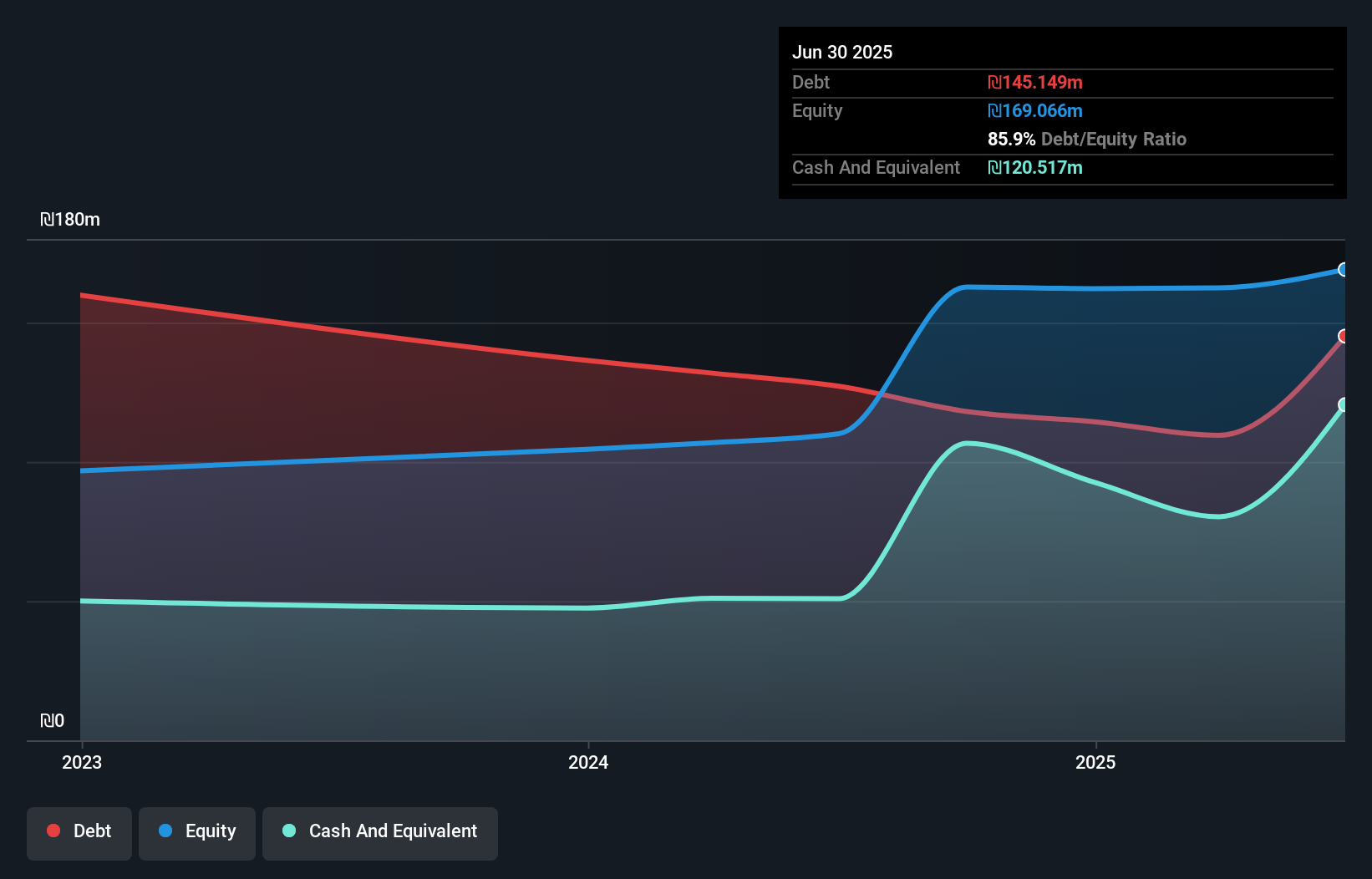Here's Why TSG IT Advanced Systems (TLV:TSG) Can Manage Its Debt Responsibly
Warren Buffett famously said, 'Volatility is far from synonymous with risk.' It's only natural to consider a company's balance sheet when you examine how risky it is, since debt is often involved when a business collapses. We note that TSG IT Advanced Systems Ltd (TLV:TSG) does have debt on its balance sheet. But should shareholders be worried about its use of debt?
What Risk Does Debt Bring?
Debt assists a business until the business has trouble paying it off, either with new capital or with free cash flow. Ultimately, if the company can't fulfill its legal obligations to repay debt, shareholders could walk away with nothing. However, a more frequent (but still costly) occurrence is where a company must issue shares at bargain-basement prices, permanently diluting shareholders, just to shore up its balance sheet. Having said that, the most common situation is where a company manages its debt reasonably well - and to its own advantage. The first thing to do when considering how much debt a business uses is to look at its cash and debt together.
What Is TSG IT Advanced Systems's Net Debt?
You can click the graphic below for the historical numbers, but it shows that as of June 2025 TSG IT Advanced Systems had ₪145.1m of debt, an increase on ₪127.1m, over one year. On the flip side, it has ₪120.5m in cash leading to net debt of about ₪24.6m.

How Healthy Is TSG IT Advanced Systems' Balance Sheet?
According to the last reported balance sheet, TSG IT Advanced Systems had liabilities of ₪167.7m due within 12 months, and liabilities of ₪207.0m due beyond 12 months. Offsetting these obligations, it had cash of ₪120.5m as well as receivables valued at ₪135.5m due within 12 months. So it has liabilities totalling ₪118.7m more than its cash and near-term receivables, combined.
Of course, TSG IT Advanced Systems has a market capitalization of ₪689.1m, so these liabilities are probably manageable. Having said that, it's clear that we should continue to monitor its balance sheet, lest it change for the worse.
View our latest analysis for TSG IT Advanced Systems
We use two main ratios to inform us about debt levels relative to earnings. The first is net debt divided by earnings before interest, tax, depreciation, and amortization (EBITDA), while the second is how many times its earnings before interest and tax (EBIT) covers its interest expense (or its interest cover, for short). Thus we consider debt relative to earnings both with and without depreciation and amortization expenses.
Looking at its net debt to EBITDA of 0.54 and interest cover of 3.0 times, it seems to us that TSG IT Advanced Systems is probably using debt in a pretty reasonable way. So we'd recommend keeping a close eye on the impact financing costs are having on the business. One way TSG IT Advanced Systems could vanquish its debt would be if it stops borrowing more but continues to grow EBIT at around 17%, as it did over the last year. When analysing debt levels, the balance sheet is the obvious place to start. But it is TSG IT Advanced Systems's earnings that will influence how the balance sheet holds up in the future. So when considering debt, it's definitely worth looking at the earnings trend. Click here for an interactive snapshot.
Finally, while the tax-man may adore accounting profits, lenders only accept cold hard cash. So it's worth checking how much of that EBIT is backed by free cash flow. Over the last three years, TSG IT Advanced Systems actually produced more free cash flow than EBIT. That sort of strong cash generation warms our hearts like a puppy in a bumblebee suit.
Our View
Happily, TSG IT Advanced Systems's impressive conversion of EBIT to free cash flow implies it has the upper hand on its debt. But the stark truth is that we are concerned by its interest cover. When we consider the range of factors above, it looks like TSG IT Advanced Systems is pretty sensible with its use of debt. That means they are taking on a bit more risk, in the hope of boosting shareholder returns. Over time, share prices tend to follow earnings per share, so if you're interested in TSG IT Advanced Systems, you may well want to click here to check an interactive graph of its earnings per share history.
Of course, if you're the type of investor who prefers buying stocks without the burden of debt, then don't hesitate to discover our exclusive list of net cash growth stocks, today.
Valuation is complex, but we're here to simplify it.
Discover if TSG IT Advanced Systems might be undervalued or overvalued with our detailed analysis, featuring fair value estimates, potential risks, dividends, insider trades, and its financial condition.
Access Free AnalysisHave feedback on this article? Concerned about the content? Get in touch with us directly. Alternatively, email editorial-team (at) simplywallst.com.
This article by Simply Wall St is general in nature. We provide commentary based on historical data and analyst forecasts only using an unbiased methodology and our articles are not intended to be financial advice. It does not constitute a recommendation to buy or sell any stock, and does not take account of your objectives, or your financial situation. We aim to bring you long-term focused analysis driven by fundamental data. Note that our analysis may not factor in the latest price-sensitive company announcements or qualitative material. Simply Wall St has no position in any stocks mentioned.
About TASE:TSG
TSG IT Advanced Systems
Provides technological products and solutions for the fields of security, civil service, and the municipal sectors.
Excellent balance sheet with acceptable track record.
Market Insights
Community Narratives



